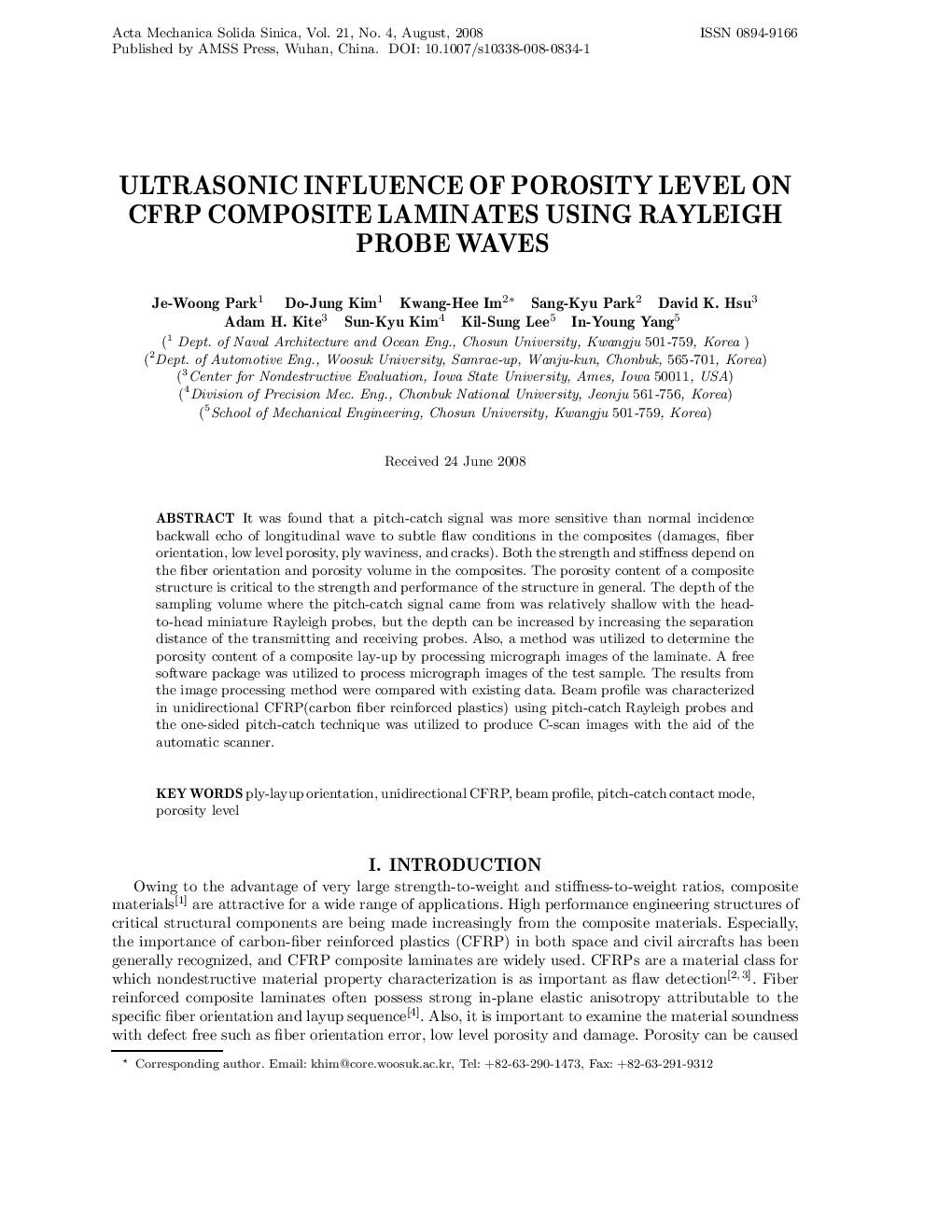| Article ID | Journal | Published Year | Pages | File Type |
|---|---|---|---|---|
| 754029 | Acta Mechanica Solida Sinica | 2008 | 10 Pages |
It was found that a pitch-catch signal was more sensitive than normal incidence backwall echo of longitudinal wave to subtle aw conditions in the composites (damages, fiber orientation, low level porosity, ply waviness, and cracks). Both the strength and stiffness depend on the fiber orientation and porosity volume in the composites. The porosity content of a composite structure is critical to the strength and performance of the structure in general. The depth of the sampling volume where the pitch-catch signal came from was relatively shallow with the head-to-head miniature Rayleigh probes, but the depth can be increased by increasing the separation distance of the transmitting and receiving probes. Also, a method was utilized to determine the porosity content of a composite lay-up by processing micrograph images of the laminate. A free software package was utilized to process micrograph images of the test sample. The results from the image processing method were compared with existing data. Beam profile was characterized in unidirectional CFRP(carbon fiber reinforced plastics) using pitch-catch Rayleigh probes and the one-sided pitch-catch technique was utilized to produce C-scan images with the aid of the automatic scanner.
